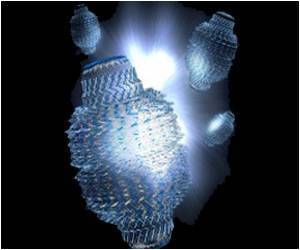American scientists have developed a nanoparticle that may prove very helpful in treating cardiovascular disease.
American scientists have developed a nanoparticle that may prove very helpful in treating cardiovascular disease.
Scientists and engineers at UC Santa Barbara, who have done this work with researchers from other places, say that the novel nanoparticle can attack plaque, a major cause of cardiovascular disease.In a research article, published in the Proceedings of the National Academy of Sciences, the researchers have revealed that the focus of their study was atherosclerosis, in which plaque builds up on the walls of arteries and can cause heart attack and stroke.
"The purpose of our grant is to develop targeted nanoparticles that specifically detect atherosclerotic plaques. We now have at least one peptide, described in the paper, that is capable of directing nanoparticles to the plaques," said Erkki Ruoslahti, distinguished professor at the Burnham Institute for Medical Research at the University of California, Santa Barbara.
The researchers have also revealed that the new nanoparticles are lipid-based collections of molecules that form a sphere called a micelle. The micelle has a peptide, a piece of protein, on its surface, and that peptide binds to the surface of the plaque.
"This turned out to be a perfect fit with our targeting technology," said Ruoslahti.
During the study, the researchers intravenously injected the micelles into the mice in which they had induced atherosclerotic plaques by keeping them on a high-fat diet, and let the particles circulate for three hours.
Advertisement
The researcher points out that the plaques tend to rupture at the "shoulder", where the plaque tissue meets the normal tissue.
Advertisement
Co-author Matthew Tirrell added: "We think that self-assembled micelles (of peptide amphiphiles) of the sort we have used in this work are the most versatile, flexible nanoparticles for delivering diagnostic and therapeutic biofunctionality in vivo.
The ease with which small particles, with sufficiently long circulation times and carrying peptides that target and treat pathological tissue, can be constructed by self-assembly is an important advantage."
Source-ANI
ARU








